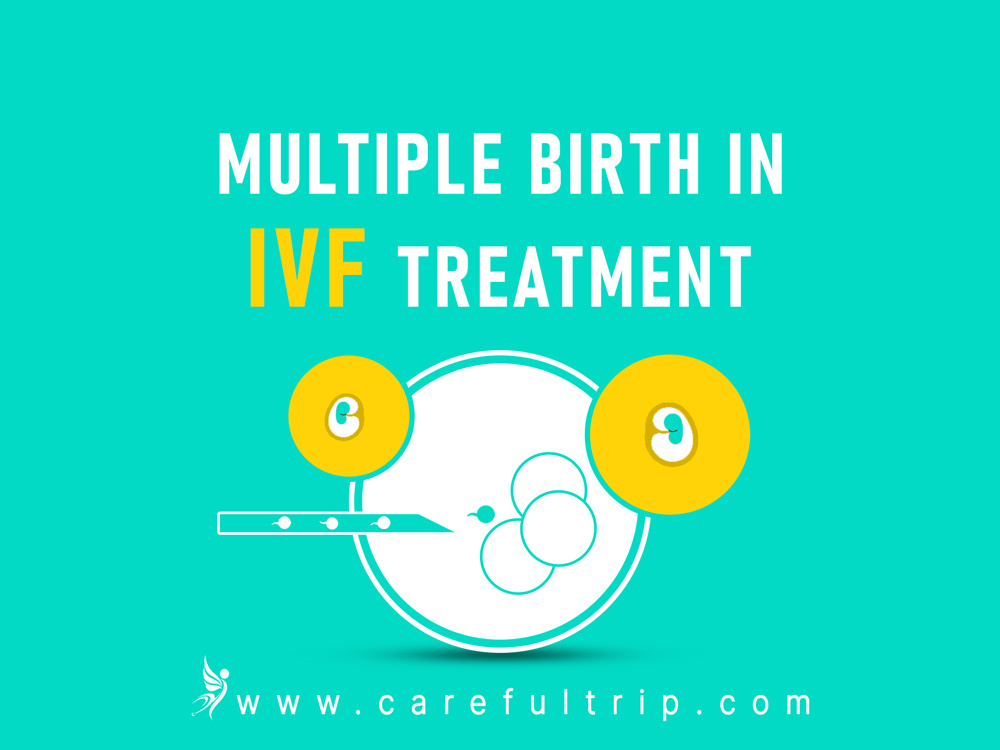
Whether you adore having multiple births, IVF is a way for many women to increase their chances of having children. On the other hand, this method makes it possible to have twins or multiple births, so it is desirable for couples who dream of having big families.
Multiple births have traditionally been one of the most prevalent options of this procedure, as the number of transplanted embryos may directly influence the likelihood of having twins or multiple babies during IVF treatment.
This article will discuss multiple births in IVF treatment and its possibility.
Is it possible to have multiple births via IVF?
IVF does not always make it significantly more likely that a woman will have more than one baby. Statistics show that women who have IVF are more likely to have twins, triplets, or more babies than women who get pregnant naturally. With IVF, the chance of having twins is 12.1% for women under the age of 35 and 9.1% for women between the ages of 35 and 37. In general, the chance of having twins is 2% for people who get pregnant naturally. Unlike natural twin birth, the chances of having twins through IVF decrease with age. Only 5.3% of women aged 38 to 40 have twins through IVF. For people aged 43 and up, the rate is only 1%.
Before a few years ago, most fertility doctors routinely transferred more than one embryo at a time to increase the chance of success. Putting two or more embryos into the uterus at once would increase the likelihood of getting pregnant, hoping at least one would live. Multiple pregnancies happen when more than one embryo is implanted successfully.
How to have multiple births via IVF?
Due to several factors, such as the cost of IVF in the U.S. and the increasing age of mothers, transferring more than one embryo during the embryo transfer stage of IVF became desirable. Instead of spending money on IVF more than once, parents could improve their chances on the first try. But the question is, how can we ensure having multiple births via IVF? There are some solutions to make you sure of having multiple births after IVF, such as:
For more information, read:
Using technologies to transfer more than one Embryo
Discoveries in embryology allow experts to tell which embryos have the best chance of succeeding in the IVF procedure. This makes many patients feel better. You may feel a little less emotional pressure when you know you can transfer “one” or more than one healthy embryo.
Taking gene tests
With sophisticated genetic tests like preimplantation genetic screening (PGS) and preimplantation genetic diagnosis (PGD), the lab can find the genetic abnormalities that often lead to miscarriage. These tests can be done without putting the embryo at risk. PGS checks for aneuploidies when chromosomes are missing or moved around (“scrambled”). PGD gives embryologists a complete picture of an embryo’s chromosomes and is often used to ensure that the embryos don’t have severe genetic diseases like Tay Sachs or cystic fibrosis.
Using time-lapse photography to control the embryo growth
The Embryoscope is a modern incubator that makes it easier for the lab to choose the healthiest embryos to transfer. In this process, a time-lapse camera takes pictures of the embryos every five minutes. The images are put together to make short movies. This lets the lab watch how the embryos grow without taking them out of the incubator, which is the best place for them to be. This decreases the risk of exposure to harmful things in the air or changes in light and temperature that could be harmful to embryos.
The other benefit of this close monitoring is that it lets scientists compare the rate at which an embryo grows to a vast database. Machine-learning algorithms look at the data and can tell when important events in development (like cell splitting) are related to a good or bad outcome. Using this method, the lab can determine which embryos are most likely to lead to a healthy baby.
Transferring blastocyst
Standard IVF procedure has been to transfer embryos after they have been grown in the lab for about 3 days, but more doctors and patients are choosing to transfer blastocysts instead. A blastocyst is a lab-grown embryo that has reached the “blastocyst stage,” which happens 5 to 6 days after fertilization. Recent technological improvements have made it possible to keep embryos healthy in the lab for that long. This will lead to some unique benefits, including:
– The extra time gives the lab more time to find the unhealthy embryos that can’t reach the blastocyst stage. This makes it less likely that an unhealthy embryo will be implanted.
– In a natural conception, a three-day-old embryo would still be in the fallopian tube, not the uterus. The embryo can attach itself to the uterus at 5 to 6 days old. So, in the blastocyst transfer, the procedure can be done at the “perfect time.”
How to prevent having multiple births via IVF?
Most top fertility experts now think that transferring only one embryo (eSET) is the best way to do IVF. But, during the ovarian stimulation process, you may have made a lot of eggs and have more than one healthy embryo, but your doctor may still suggest that you transfer only one (freezing the rest for any future IVF cycles.)
Multiple births via IVF in Iran
Iran is widely known for IVF among foreigners who seek to have this treatment abroad. If you want to have twins or triplets via IVF, it is best to trust Iranian professionals that are experts in making your wishes come alive.
During the process of IVF, it is possible to implant more than one embryo at a time to increase the chances of a successful pregnancy. Also, this increases the probability that you will have twins.
CarefulTrip, as the health tourism service provider in Iran, can connect you to the provide the best IVF services in the best hospitals in Iran. To get more information about multiple births via IVF, getting a free consultant from CarefulTrip’s experts is better.
Conclusion
If you want to get IVF treatment, whether you want to have multiple births or are aware of its opportunity, make sure about the process and facilities of the hospital. Choose the best services with the highest quality with CarefulTrip to pass the procedure safely.
For more information, read:

